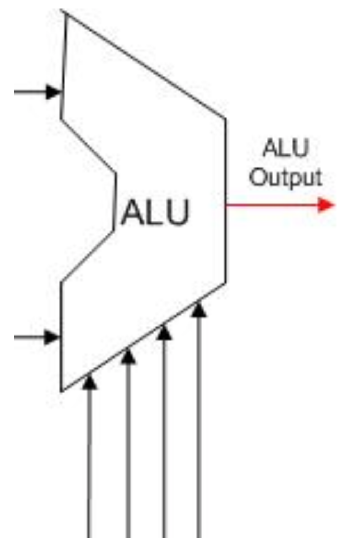6.1: Introduction
- Page ID
- 26981
The material covered up to this point was used to show how to implement circuits. This chapter will cover a circuit that will be used as an IC, and this circuit forms a basic building block of a CPU.
Addition is central to all arithmetic operations, and all other arithmetic operations (subtraction, multiplication, and division) can be built using addition. Therefore, addition is central to implementation of the Arithmetic Logic Unit (ALU) in a CPU shown in Figure \(\PageIndex{1}\). This chapter will show how addition of whole numbers using Boolean operations, and how it can be implemented in a circuit.

This chapter will first look at how two one-bit binary numbers can be added, which will be implemented using a circuit called the half adder. The need for a carry bit will become apparent when trying to add numbers larger than a single bit, and this will be done using a circuit called a full adder. Full adders will then be chained together to form an n-bit adder, which will be able to perform addition of whole numbers.


